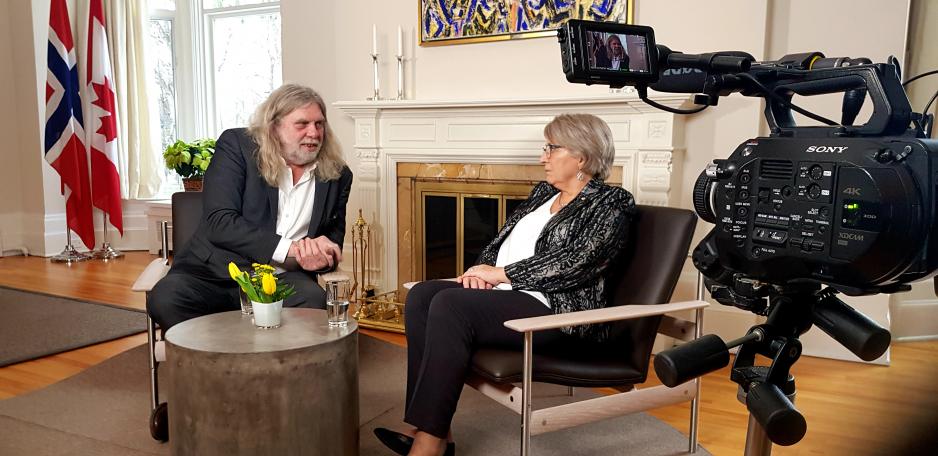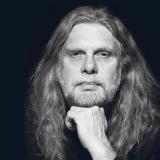Commentary: Territory of Dialogue - The Exceptional North

Mary Simon was a key actor in the negotiations leading up to the establishing of the Arctic Council. Picture shows Mary Simon in conversation with High North News’ Editor-in-Chief Arne O. Holm in Ottawa yesterday. (Photo: Neil Dowling).
Ottawa, Canada: Arctic history was written 22 years ago just a stone’s throw away from the hotel I am staying at. Back then, Inuit Mary Simon led the negotiations that led up to what is today known as the Arctic Council. The Ottawa Declaration was to lay the foundation for future cooperation in the Arctic.
Eight states found each other in an Arctic community. One of Mary Simons’ most important contributions was involving the Arctic indigenous peoples in this cooperation.
Survives most things
In other words, the Arctic states of Canada, Denmark, Finland, Iceland, Norway, Russia, Sweden and the USA are not the only permanent members of the Arctic Council.
Six indigenous peoples also hold seats in the Council, among them the Sami Parliament – Sametinget.
On Thursday, I met with the 70 year-old, still active and influential Mary Simon here in Ottawa. That interview will be published later.
The history that was written in Ottawa back in 1996 is worth reminding of in a time when international cooperation appears both complicated and threatening.
In just over a month’s time, on 6-7 May, the foreign ministers of the Arctic countries meet again. This time in Rovniemi, Finland. The ministerial meeting forebodes the end of Finland’s two year-long chairmanship, and the baton will be passed on to Iceland for the next two years.
After that, it is Russia’s turn.
Not always smoothly
Arctic cooperation has not always run smoothly. It was for instance Canada that nearly pulled the rug under the Council back in 2015. When Canada was to hand the baton over to the USA, the meeting was located in Iqaluit in Nunavut, northern Canada, a place that was hardly accessible for anyone but ministers, and where beds were hard to come by if one should be lucky enough to get a seat on a plane. It was almost impossible for the press to attend. Canada was in a deep conflict with Russia and put a lot of effort into making a quiet transition out of what is usually a formal and often festive event.
Canada’s chairmanship from 2013 to 2015 is not even mentioned on the Arctic Council’s home page, though I will not speculate too much about that. It just states that the USA took over in 2015, not from whom.
But it there is something resilient about this northern cooperation, even though many other international agreements and organizations are on their knees these days.
New northern summit
Next week, this will be demonstrated once again.
One of the highlights of the High North Dialogue conference in Bodø, Norway is a meeting between ambassadors from the Arctic states. The American ambassador to Norway will sit next to his Russian colleague, surrounded by ambassadors from Finland, Canada and Sweden. The EU’s Arctic Ambassador, practically holding observer status with the Arctic Council, will also be there; as will State Secretary Audun Halvorsen of the Norwegian Ministry of Foreign Affairs.
It is, in other words, still possible to gather the East and the West for constructive dialogue. Not just that, the talks take place in full view of the public, without any regulations from the parties involved. I can guarantee that. I myself will chair the debate.
If this had taken place further south in Norway, organized by one of the thinktanks that hold a frequent visitor’s pass with national media, this would more than likely have received widespread attention.
But because it happens in the Arctic, I am not sure that it will. Much in the same way that I am not sure that this meeting would actually have been possible in places other than the High North.
The territory of dialogue.

